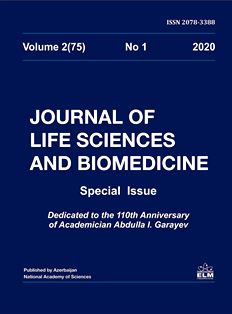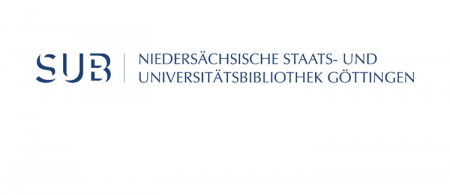
Tissue and subcellular activities of superoxide dismutase in skeletal muscles during physical exercises
Research article: Tissue and subcellular activities of superoxide dismutase in skeletal muscles during physical exercises
Authors: A.M. Gadzhiev1,2, S.A. Aliyev1,2*, A.K. Hassanova2, Z.B. Rzayev2
1Academician Abdulla Garayev Institute of Physiology, Azerbaijan National Academy of Sciences, 78 Sharifzadeh Str., Baku AZ1100, Azerbaijan;
2State Academy of Physical Education and Sport, 98a Fatali Khan Khoysky Str., Baku AZ1072, Azerbaijan
For correspondence: saadat.aliyev@mail.ru
Accepted for publication: 22 May 2020
Abstract: Activity of the enzyme superoxide dismutase (SOD) in the skeletal muscles was studied on the tissue and subcellular levels in the rats exposed to physical exercise. The specific differences in response to acute and regular training exercises were revealed in superoxide dismutase activities measured in tissue homogenate, mitochondrial and cytosolic fractions of white and red gastrocnemius muscles in the rats. These differences depended on exercise character (acute or chronic), fiber composition (glycolytic and oxidative) and subcellular localization of the enzyme. In the studied muscles, adaptive increase of SOD tissue activity was not shown in response to regular training exercise. In white muscles, preferentially composed of glycolytic fibers, adaptive induction of mitochondrial SOD (mitSOD) activity by regular training was more obvious than in red muscles, composed preferentially of oxidative fibers. However, induction of mitSOD activity by acute exercise in red muscles was displayed more strongly, than in white muscles. In red muscles of trained animals, the increase in SOD activity in the cytoplasm (cytSOD) becomes more moderate in response to testing exercise. In white muscles, cytSOD activity does not undergo adaptive changes and is not induced by testing exercise. Analysis of SOD activity in mitochondrial and cytoplasmic fractions of fast and slow muscles will be useful for elucidation of their adaptive peculiarities.
Keywords: Skeletal muscles, physical exercise, superoxide dismutase, subcellular fractions
References:
Hajiyev A.M., Rzaev Z.B. (2013) Features of the response of subcellular activity of antioxidant enzymes in skeletal muscles to physical activity. Problems of physiology and biochemistry. ANAS named after AI Garayev Institute of Physiology and Collection of Scientific Works of the Azerbaijan Society of Physiologists. 31:94-102.
Dubinina E.E., Salnikova L.A., Ramenskaya N.P., Efimova L.F. (1984) Peroxidation and antioxidant system of blood in ontogeny. Question. honey. Chemistry, 5: 28-32.
Kerimova A.K., Gadzhiev A.M. (2004) Effect of exercise on lipid oxidation in skeletal muscle. Actual problems of physiology and biochemistry, 30: 256-264.
Skulachev V.P. (1996) Oxygen in a living cell: good and evil. Soros Educational Journal, No. 3: 2-10.
Prokhorova M.I. (1982) Methods of biochemical research. Publishing house of S.-P. un-t, s. 29-43.
Alessio H.M., Goldfarb A.H. (1988) Lipid pero-xidation and scavenger enzymes during exerci-se: adaptive response to training. J. Appl. Physi-ol., 64(4): 1333-1336.
Azizbeigi K., Stannard S.R., Atashak S. et al. (2014) Antioxidant enzymes and oxidative stress adaptation to exercise training: Comparison of endurance, resistance, and concurrent training in untrained males. Journal of Exercise Science & Fitness, 12(1): 1-6. https://doi.org/10.1016/j.jesf. 20 13.12.001
Banerjee A.K., Mandal A., Chanda D., Chak-raborti S. (2003) Oxidant, antioxidant and physical exercise. Molecular and Cellular Bioc-hemistry, 253(1-2): 307-312. Tissue and subcellular activities of superoxide dismutase in skeletal muscles during physical exercise
Buettner G.R. (1993) The pecking order of free radicals and antioxidants: lipid peroxidation, alpha-tocopherol, and ascorbate. Arch. Biochem. Biophys., 300(2): 535-543.
Davies K., Quintanilla A., Brooks G., Packer L. (1982) Free radicals and tissue damage produ-ced by exercise. Biochem. Biophys. Res. Com-mun., 107(4): 1198-1205.
Gomes E.C., Silva A.N., De Oliveira M.R. (2012) Oxidants, antioxidants, and the beneficial roles of exercise-induced production of reactive species. Oxidative medicine and cellular longe-vity. Hindawi Publishing Corporation, 2012: Article ID 756132, 12 p. DOI: 10.1155/2012/756132
Halliwell B. (2014) Cell culture, oxidative stress, and antioxidants: avoiding pitfalls. Biomed. J., 37(3): 99-105. doi: 10.4103/2319-4170.128725.
Halliwell B., Gutteridge J.M.C. (1989) Free ra-dicals in Biology and Medicine (2nd ed). Oxford: Clarendon Press, pp.136-158
Higuchi M., Cartier L.J., Chen M., Holloszy J.O. (1985) Superoxide dismutase and catalase in skeletal muscle: adaptive response to exerci-se. J. Gerontol., 40(3): 281-286.
Hollander J., Fiebig R., Gore M. et al. (1999) Superoxide dismutase gene expression: fiber-specific adaptation to endurance training. Am. J. Physiol., 277(3): R856-R862. DOI: 10.1152/ajp-regu.1999.277.3.R856
Hollander J., Fiebig R., Gore M. et al. (2001) Superoxide dismutase gene expression is activa-ted by a single bout of exercise in rat skeletal muscle. Pflugers Arch., 442(3): 426-34. DOI: 10.1007/s004240100539
Ji L.L. (1993) Antioxidant enzyme response to exercise and aging. Med. Sci. Sports Exerc., 25(2): 225-231.
Ji L.L. (1999) Antioxidants and oxidative stress in exercise. PSEBM, 222(3): 283-292. DOI: 10.1046/j.1525-1373.1999.d01-145.x
Lambertucci R.H., Levada-Pires A.C., Rossoni L.V. et al. (2007) Effects of aerobic exercise training on antioxidant enzyme activities and mRNA levels in soleus muscle from young and aged rats. Mech. Ageing Dev., 128: 267–275.
Laughlin M.H., Simpson T., Sexton W.L. et al. (1990) Skeletal muscle oxidative capacity, an-tioxidant enzymes, and exercise training. J. Appl. Physiol., 68(6): 2337-2343. 10.1152/jappl. 1990.68.6.2337
Lawler J.M., Kwak H.B., Kim J.H. et al. (2009) Exercise training inducibility of MnSOD protein expression and activity is retained while reducing prooxidant signaling in the heart of se-nescent rats. Am. J. Physiol. Regul. Integr. Comp Physiol., 296(5): R1496–R1502. doi: 10.1152/ajp regu.90314.2008
Leuwenburgh C., Hollander J., Leichtweis S. et al. (1997) Adaptations of glutathione antioxidant system to endurance training are tissue- and muscle fiber-specific. Am. J. Physiol., 272(1): 363-369. DOI: 10.1152/ajpregu.1997.272.1.R363
Leeuwenburgh C., Heinecke J. W. (2001) Oxi-dative stress and antioxidants in exercise. Cur-rent Medicinal Chemistry, 8(7): 829-838. DOI: 10.2174/0929867013372896
Oh-Ishi S., Kizaki T., Nagasawa J. et al. (1997) Effects of endurance training on superoxide dis-mutase activity, content, and mRNA expression in rat muscle. Clin. Exp. Pharmacol. Physiol., 24(5): 326-332. 10.1111/j.1440-1681.1997.tb01196.x
Ohno H., Suzuki K., Fujii J. et al. (1994) Supe-roxide dismutases in exercise and disease. In: Exercise and Oxygen Toxicity, C.Sen, L.Pac-ker, and O.Hanninen (Eds.). Amsterdam: Elsevi-er Publishers, p. 127-161.
Powers S.K.; Ji L.L, Leeuwenburgh K. (1999) Exercise training-induced alterations in skeletal muscle antioxidant capacity: a brief review. Me-dicine & Science in Sports & Exercise, 31(7): 987-997
Powers S.K., Jackson, M.J. (2008) Exercise-in-duced oxidative stress: Cellular mechanisms and impact on muscle force production. Physiol. Rev., 88(4): 1243–1276. DOI: 10.1152/physrev. 00031.2007
Ristow M., Zarse K., Oberbach A. et al. (2009) Antioxidants prevent health-promoting effects of physical exercise in humans. Proc. Natl. Acad. Sci. USA, 106(21): 8665–8670. doi: 10.1073/ pnas.0903485106
Steinbacher P., Eckl P. (2015) Impact of oxidati-ve stress on exercising skeletal muscle. Biomole-cules, 5(2): 356-377. doi:10.3390/ biom5020356
Tonkonogi M., Walsh B., Svensson M., Sahlin K. (2000) Mitochondrial function and antioxida-tive defence in human muscle: effects of endu-rance training and oxidative stress. Journal of Physiology, 528(2): 379-388. DOI: 10.1111/j.1469-7793.2000.00379.x Gadzhiev et al.
Vollaard N.B., Shearman J.P., Cooper C.E. (2005) Exercise-induced oxidative stress: Myths, realities and physiological relevance. Sports Med., 35(12): 1045–1062. DOI: 10.2165/00007256-200535120-00004
White S.H., Warren L.K. (2017) Submaximal exercise training, more than dietary selenium supplementation, improves antioxidant status and ameliorates exercise-induced oxidative da-mage to skeletal muscle in young equine athletes J. Anim. Sci., 95(2): 657-670. doi:10.2527/jas2016.1130























